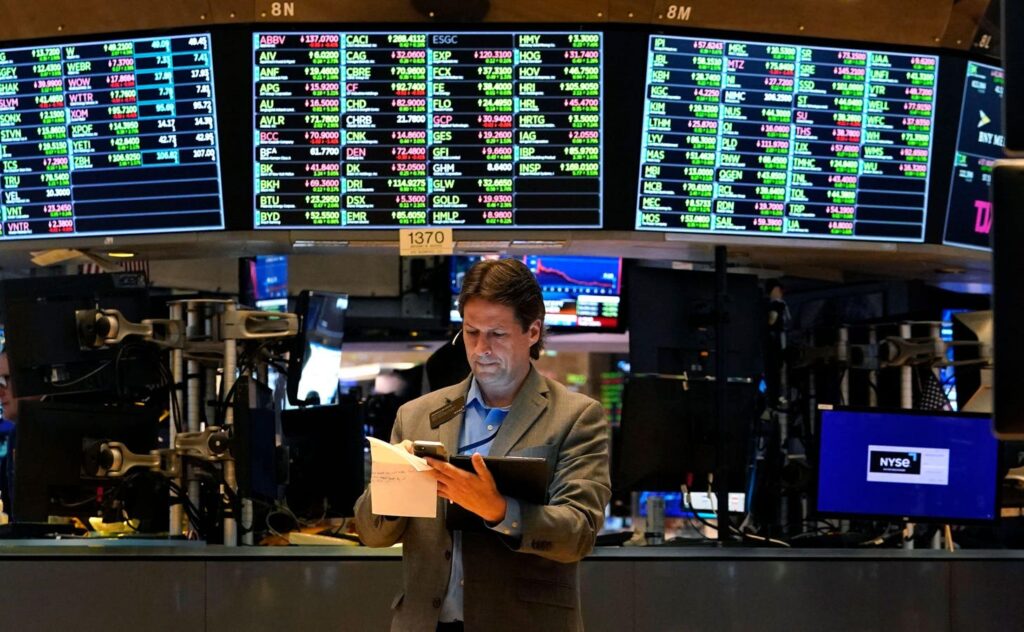Stocks appreciate much more overnight than they do during trading hours. This is one of the most dramatic, regular, and overlooked features of stock market activity. There are two competing explanations for why this happens. The first is manipulative trading by large market neutral quantitative investing firms, the so called “big quant shops.” The second is trading activity by retail investors, mostly in meme stocks.
New evidence suggests that elements from both explanations contribute to the phenomenon, with trading by big quant shops generating most of the overnight price appreciation effect. The new evidence involves day-of-the-week patterns in overnight price appreciation, especially on Tuesdays and Thursdays.
The Tuesday-Thursday phenomenon is consistent with the price manipulation explanation advanced by Bruce Knuteson, the CEO of Kn-X. As I discussed in a recent post, for about a decade, Knuteson has argued that before the market opens, quant shops add to positions already in their portfolio when liquidity is low, in order to drive up the values of their portfolios. The quant shop later sells these securities near the market close, when liquidity is higher.
Because of the difference in liquidity, the consequent decrease in price at the close is smaller in magnitude than the increase in price at the open, and so, as a result, the value of the quant shop’s portfolio increases. The overall effect is a decline in price in the period leading up to the close, coupled with an increase in price at the next day’s open. This is the basis for the higher overnight price appreciation, relative to intraday price appreciation, where intraday means during trading hours.
The meme stock explanation was put forward by Victor Haghani, Vladimir Ragulin and Richard Dewey in an article that recently appeared in the Journal of Investment Management. The “meme stock” argument involves retail investors choosing stocks mostly when not at work and markets are closed, and placing trades to be executed at the open.
Neither Knuteson nor Haghani, Ragulin, and Dewey analyze how overnight returns vary by day-of-the-week. In email communications with them, I asked their opinions whether day-of-the-week patterns would vary with the type of explanation for overnight returns. In response, none expressed having a clear view on this point.
At the time, my own sense was that if the meme stock theory was credible, then it would be reasonable to expect high price appreciation over the weekend, because the weekend plausibly affords retail investors more time to engage in stock picking than they have during the week.
Ragulin kindly agreed to undertake a day-of-the-week empirical analysis in order to identify any clear patterns. I also asked him if he could compare meme stocks against non-meme stocks, and to assess whether there were discernable differences between the two groups. He chose what he and his coauthors identified as the top 23 meme stocks, along with a random selection of 24 non-meme stocks (which he described as “boring stocks.”) His analysis used daily data for the period 2020 through 2024.
Non-Meme (Regular) Stocks
The following bar chart displays average price appreciation (per 24-hours) broken down by day-of-the-week, for non-meme stocks.
Notice from the above chart that overnight price appreciation is highest on Tuesday, meaning from the Monday close to the Tuesday open. Overnight price appreciation is lowest on Thursday. This pattern is consistent with big quant shops placing orders after the Monday close, to be executed at the Tuesday open. It is also consistent with these quant shops reversing the trades after the Wednesday close, to be executed at the Thursday open.
The chart also suggests a motive for this overnight pattern. Intraday price appreciation is generally negative on both Tuesday and Wednesday. Therefore, trades to help support the value of their portfolios would be most needed between the Tuesday open and the Wednesday close.
Notice that the chart indicates that price appreciation on Friday –overnight, intraday, and full– is relatively high, but that overnight appreciation for Monday, meaning over-the-weekend, is negative. This pattern is consistent with the “weekend effect” of low price appreciation from Friday close to Monday open.
At the right of the chart there appears the result for the full week. This portion of the chart effectively describes the overnight effect: overnight price appreciation is 50% higher than intraday appreciation.
Meme Stocks
The next chart depicts the situation for meme stocks, which attract the interest of retail investors.
Notice that there is a similar Tuesday-Thursday overnight appreciation effect for meme stocks as for non-meme stocks. This suggests the possibility that quant shops are engaging in the same kind of price manipulation for meme stocks as for non-meme stocks. The negative intraday appreciation on Tuesday and Wednesday provides further support for this view. Of course, the chart also indicates that intraday returns for meme stocks are negative on Thursdays and Fridays.
Notice that over-the-weekend appreciation is positive for meme stocks, but negative for non-meme stocks. This suggests a potential role for retail investors, in line with the meme stock explanation. Retail investors spend time during the weekend picking stocks, with some submitting orders to be executed at the Monday open. Other retail investors appear to place orders during the day on Monday. In this regard, intraday price appreciation for meme stocks is by far highest on Monday than any other day of the week.
At the right of the chart appears the result for the full week. This portion of the chart illustrates that for meme stocks, all of the positive price appreciation occurs in the after-market. Intraday appreciation is negative.
Meme stock price appreciation was very different between 2020 and 20204 than non-meme stock appreciation. Meme stock appreciation was larger by factor of four. Volatility was also much higher for meme stocks. The standard deviation of price appreciation within the 23 meme stocks was almost 10 times larger than for non-meme stocks.
Conclusion
To conclude, evidence about day-of-the-week effects suggests that both price manipulation by big quant shops, as well as trading by retail investors in meme stocks, contribute to overnight price appreciation being dramatically higher than intraday appreciation.
Read the full article here
















